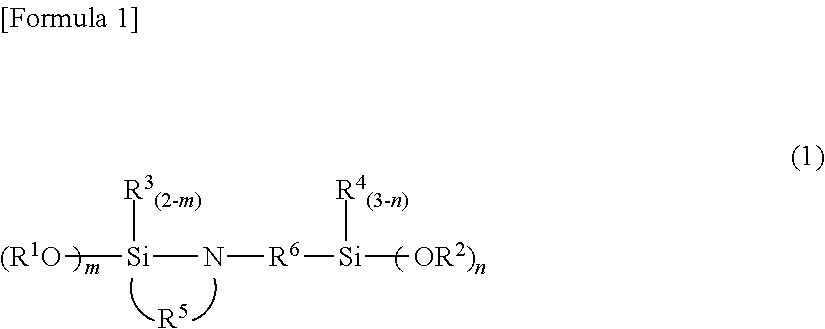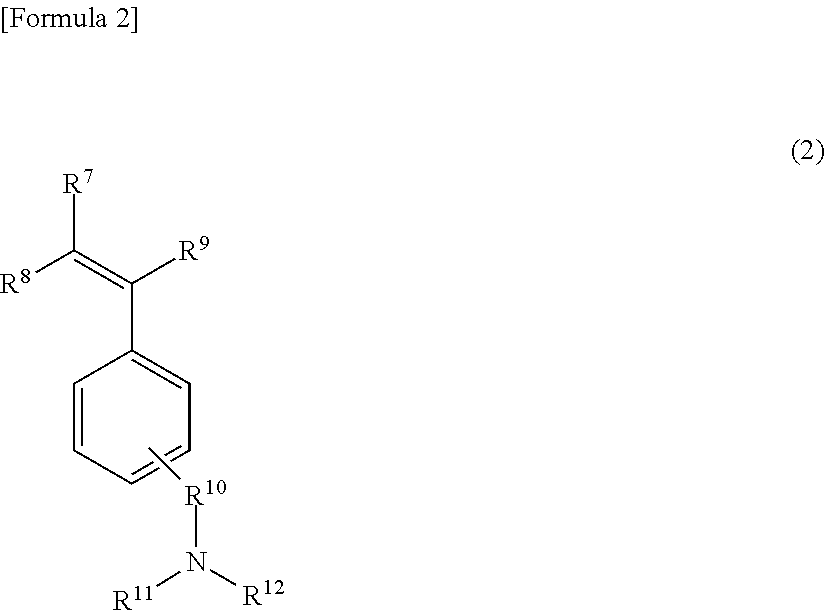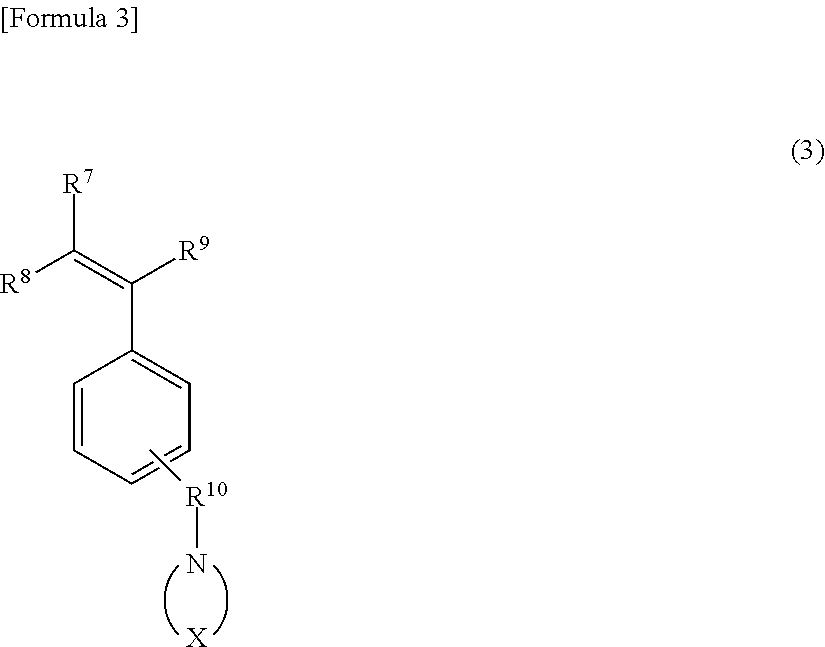Method for Producing Modified Conjugated Diene Polymer, Modified Conjugated Diene Polymer, Modified Conjugated Diene Polymer Composition, Rubber Composition and Tire
a technology of conjugated diene and polymer, which is applied in the direction of transportation and packaging, tyre parts, special tyres, etc., can solve the problems of inability to obtain good dispersibility of silica particles and hydrophilic surface of silica, and achieve high dynamic modulus of elasticity, excellent balance, and low hysteresis loss properties
- Summary
- Abstract
- Description
- Claims
- Application Information
AI Technical Summary
Benefits of technology
Problems solved by technology
Method used
Image
Examples
production example 1
Synthesis of (4-(2-pyrrolidinoethyl)styrene)
[0345]In Production Example 1, 4-(2-pyrrolidinoethyl)styrene: Py-St, was synthesized as a nitrogen atom-containing vinyl compound to be used in the polymerization step.
[0346]First, to a pressure-proof container having an inner volume of 1 L and sufficiently purged with nitrogen, 388 g of cyclohexane, 36 g of pyrrolidine and 65 g of divinylbenzene were added and allowed to stand still in a water bath regulated at 0° C.
[0347]Subsequently, a cyclohexane solution containing 0.072 g of n-butyllithium was added and stirred.
[0348]Two hours later, isopropanol was added to the system to terminate the reaction.
Extraction / washing / purification were performed to obtain 4-(2-pyrrolidinoethyl)styrene.
example 1
[0349]A temperature controllable autoclave having an inner volume of 5 L and equipped with a stirrer and a jacket was used as a reactor. In the reactor, 265 g of 1,3-butadiene (Bd), 93 g of styrene (St), 1.66 g of N,N-dimethylvinylbenzylamine (DMVB), 1633 g of normal hexane (nHex) and 0.85 g of 2,2-bis(2-oxolanyl)propane serving as a polar substance, from which impurities were previously removed, were placed and the interior temperature of the reactor was maintained at 55° C.
[0350]A cyclohexane solution containing 0.33 g of n-butyllithium serving as a polymerization initiator was supplied to the reactor.
[0351]After initiation of a polymerization reaction, the interior temperature of the reactor started increasing by heat generation due to polymerization and the final interior temperature of the reactor reached 82° C.
[0352]Two minutes after the reaction temperature reached the peak, 0.40 g of 2,2-dimethoxy-1-(3-trimethoxysilylpropyl)-1-aza-2-silacyclopentane was added to the reactor,...
example 2
[0356]Sample B was obtained in the same manner as in preparation of the above (sample A) except that the amount of N,N-dimethylvinylbenzylamine to be added was 3.32 g.
[0357]The molar ratio of N,N-dimethylvinylbenzylamine and the modifier relative to n-butyllithium were 4.00 and 0.25, respectively.
[0358]As a result of analysis of sample B, the amount of bound styrene was 27 mass % and the amount of bound butadiene was 73 mass %. The Mooney viscosity at 100° C. was 55. The amount of vinyl linkage (amount of 1,2-bonding) in the microstructure of a butadiene moiety, obtained by calculation in accordance with the Hampton's method based on the measurement results by use of an infrared spectrophotometer was 54%. Furthermore, the modification ratio was 92%. The analysis results of sample B were shown in Table 1.
PUM
| Property | Measurement | Unit |
|---|---|---|
| Percent by mass | aaaaa | aaaaa |
| Percent by mass | aaaaa | aaaaa |
| Percent by mass | aaaaa | aaaaa |
Abstract
Description
Claims
Application Information
 Login to View More
Login to View More - R&D
- Intellectual Property
- Life Sciences
- Materials
- Tech Scout
- Unparalleled Data Quality
- Higher Quality Content
- 60% Fewer Hallucinations
Browse by: Latest US Patents, China's latest patents, Technical Efficacy Thesaurus, Application Domain, Technology Topic, Popular Technical Reports.
© 2025 PatSnap. All rights reserved.Legal|Privacy policy|Modern Slavery Act Transparency Statement|Sitemap|About US| Contact US: help@patsnap.com



